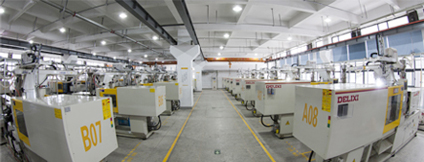Hangzhou Delixi Group Co.,Ltd.
Featured News
We've just had a very basic overview of frequency inverter—and now let's go over it again in a little bit more detail.
Imagine you're a DC battery and someone taps you on the shoulder and asks you to produce AC instead. How would you do it? If all the current you produce flows out in one direction, what about adding a simple switch to your output lead? Switching your current on and off, very rapidly, would give pulses of direct current—which would do at least half the job. To make proper AC, you'd need a switch that allowed you to reverse the current completely and do it about 50‐60 times every second. Visualize yourself as a human battery swapping your contacts back and forth over 3000 times a minute. That's some neat fingerwork you'd need!
In essence, an old-fashioned mechanical frequency inverter boils down to a switching unit connected to an electricity transformer. If you've studied our article on transformers, you'll know that they're electromagnetic devices that change low-voltage AC to high-voltage AC, or vice-versa, using two coils of wire (called the primary and secondary) wound around a common iron core. In a mechanical frequency inverter, either an electric motor or some other kind of automated switching mechanism flips the incoming direct current back and forth in the primary, simply by reversing the contacts, and that produces alternating current in the secondary—so it's not so very different from the imaginary frequency inverter I sketched out above. The switching device works a bit like the one in an electric doorbell. When the power is connected, it magnetizes the switch, pulling it open and switching it off very briefly. A spring pulls the switch back into position, turning it on again and repeating the process—over and over again.
Animation: The basic concept of an electromechanical frequency inverter. DC feeds into the primary winding (pink zig-zag wires on the left side) of a toroidal transformer (brown donut), through a spinning plate (red and blue) with criss-cross connections. As the plate rotates, it repeatedly switches over the connections to the primary winding, so the transformer is receiving AC as its input instead of DC. This is a step-up transformer with more windings in the secondary (yellow zig-zag, right-hand side) than the primary, so it boosts a small AC input voltage into a larger AC output. The speed at which the disk rotates governs the frequency of the AC output. Most frequency inverter don't work anything like this; this simply illustrates the concept. An frequency inverter set up this way would produce a very rough square wave output.
This article comes from explainthatstuff edit released

The IoE Ushers in Opportunity for The Last Product Recall
In our consumer-centric society, product recall announcements grab headlines and...
 86 - 571 - 85221566
86 - 571 - 85221566
 Login/Register
Login/Register

